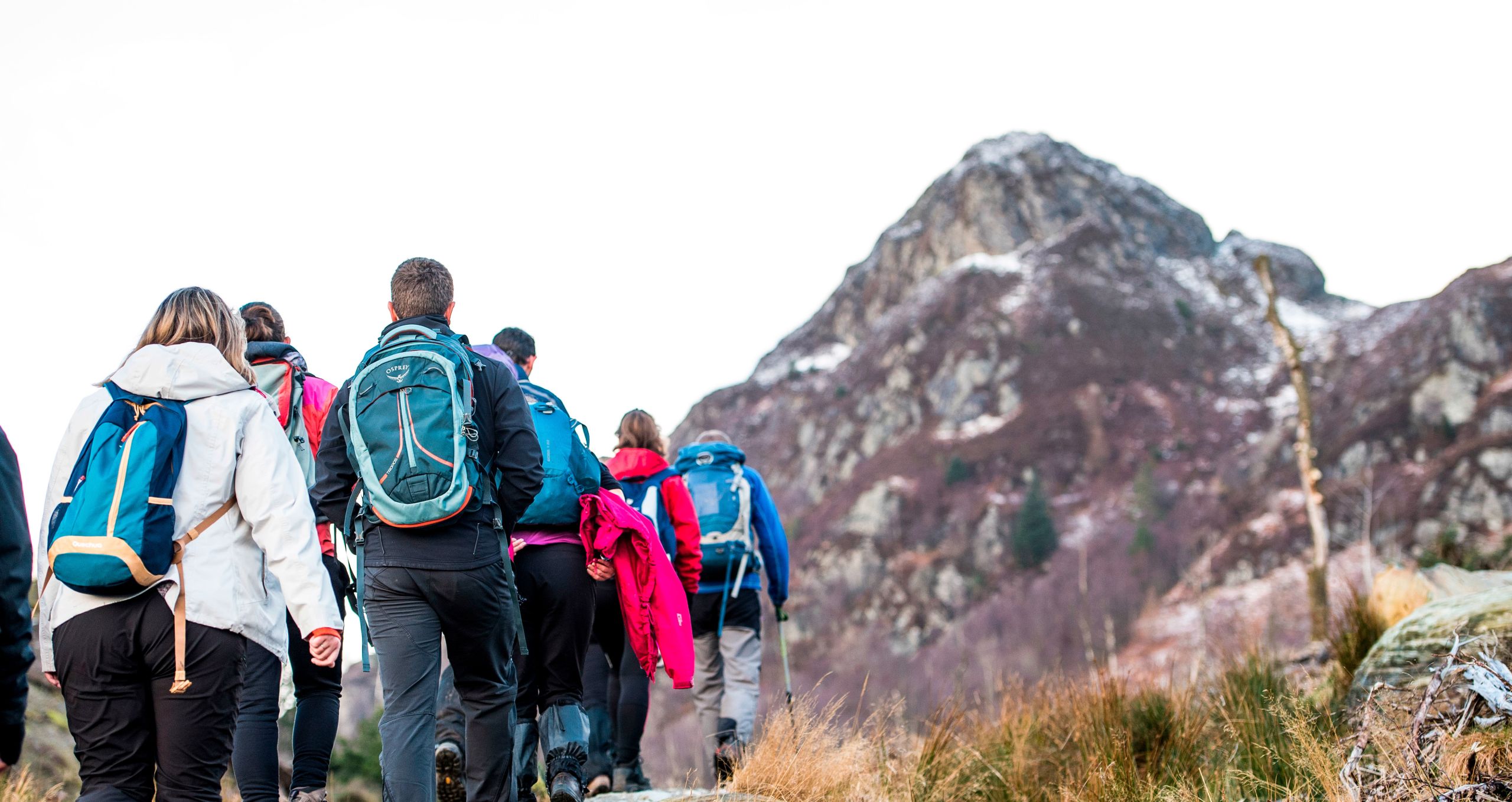How do paths work in Scotland?
Scotland has thousands of miles of paths, – but who’s responsible for them? And how do you find them?

We are proud of Scotland’s world-class access laws, which give us the right to walk on most land provided we act responsibly. But that doesn’t mean we don’t also need good paths.
Paths link communities and help us to find pleasant places to walk. Paths also give confidence to walkers, especially when they pass through farmland or residential areas.
Paths encourage people to get active and visit places. In fact, a NatureScot report has found that every £1 invested in paths delivers £7 of economic, health, environmental and social benefits.
Scotland has thousands of miles of paths, but they aren’t always well-maintained, signed or even mapped. All too often we don’t know where paths are, which is why we created our award-winning Scottish Paths Map.
Scotland has no ‘public footpath’ signs like in England and Wales as walkers, cyclists and horse-riders have the right to be on any path. In practice people tend to avoid those paths which aren’t suitable for their needs. For example, people would be unwise to walk downhill mountain biking tracks at trail centres at busy times. It’s important that all path users are courteous towards each other.
There are many kinds of paths, including ‘core paths’, rights of way and long distance routes.
Core paths
There are more than 13,000 miles of core paths in Scotland. Core path plans were a requirement of Scotland’s access legislation. Each local authority and national park consulted the public to draw up their plans.
Core paths are usually the most popular paths and should be signposted.
Core paths have an extra level of legal protection, as authorities have powers to keep these paths free from obstruction, even if landowners refuse to take action.
Core paths aren’t specially highlighted on Ordnance Survey maps, although many of them do appear on the maps. However, you can find an online portal showing all core paths on the NatureScot website.:
Rights of way
Scotland also has a network of more than 11,000 miles of recorded rights of way. These are paths which that meet a number of legal tests, including continued use over 20 years . There has never been a definitive map of paths in Scotland. As a result, very few rights of way here have the historic legal protections that secure English and Welsh rights of way for future generations to enjoy.
Although we now have statutory access rights on most land in Scotland, rights of way can still be very useful. For example, you can walk on a rights of way through farmyards, urban alleyways or close to houses, even if access rights do not apply.
The ScotWays charity holds the catalogue of rights of way in Scotland. Its green and white signposts can be seen across the country.
Long distance routes
Walking a long-distance route is a great way to explore Scotland. There are currently 29 routes branded as Scotland’s Great Trails, Scotland’s Great Trails, totalling almost 2,000 miles in length. To qualify, a route must be more than 25 miles long, be signed and well managed.
There are also many other long-distance routes developed as local initiatives which don’t yet fit the criteria to become one of Scotland’s Great Trails.
Long- distance routes make a significant contribution to rural economies, as well as to our health and wellbeing. They are used for day walks and by those completing the trail. Many of these walkers will buy a coffee or lunch along the way, have an overnight stay or use a baggage transfer service.
How can you improve your local paths?
Many Ramblers groups and individual volunteers help to improve their local paths. Ramblers Scotland can support this by providing guidance and insurance for path maintenance.
Keeping paths free from obstruction is important work. It’s generally the landowner’s responsibility to maintain paths, although local authorities can agree to carry out maintenance on important routes. You’ll need permission from the landowner for anything more than very minor improvements. Landowners can apply for public funding to cover path work.
Here are some ideas on how you can improve your local paths:
-
Raise funds for leaflets, signage, benches or interpretation boards. Our groups can make applications for Ramblers funding or raise money through raffles and other activities. Check out Paths for All's Community Path grants, which provide small grants for path work.
-
Set up a path maintenance group. Groups can also join existing ‘Friends of’ groups or form a work party with local rangers.
-
Litter picking on busy paths. If there is a very large amount of litter, including fly-tipping, contact your local authority first.
-
Take on an access role within a Ramblers Scotland group, or sign up as an individual access volunteer.
-
Become a Path warden, if your local authority runs such a scheme.
-
Volunteer to improve and expand our Scottish Paths Map.

Scottish access rights
Thanks to Scotland’s fantastic world-class access rights, you can enjoy walking on nearly all land in Scotland.

Scottish Paths Map
You can find paths across Scotland using our Scottish Paths Map, the best-ever map of the nation’s trails.

The easiest Munros to bag in Scotland
What is a Munro? What is Munro Bagging? Why should you want to ‘bag’ a Munro? And where should you begin? Your questions answered.